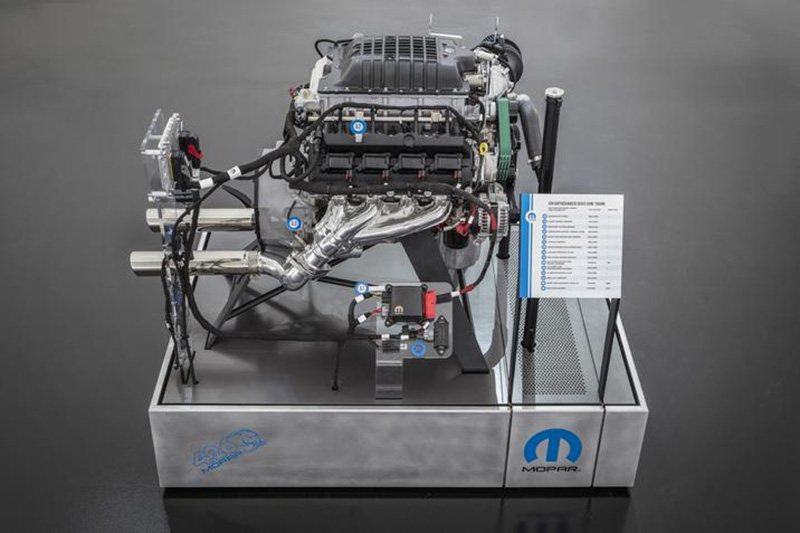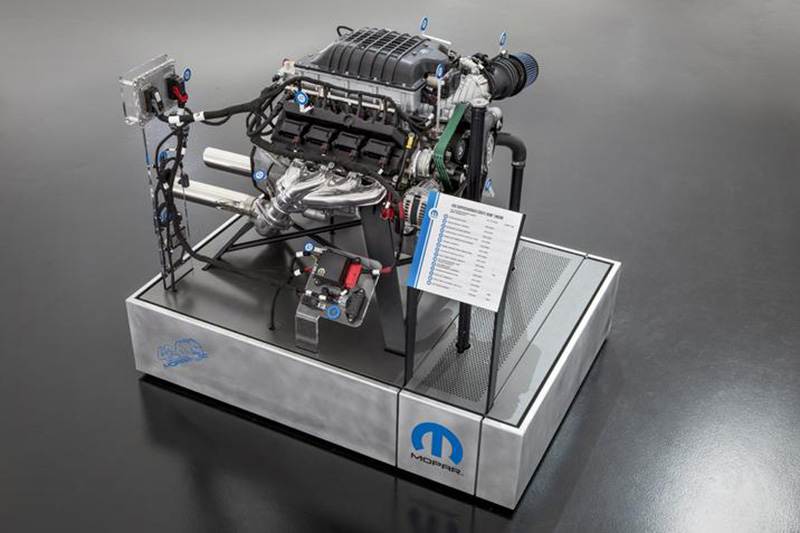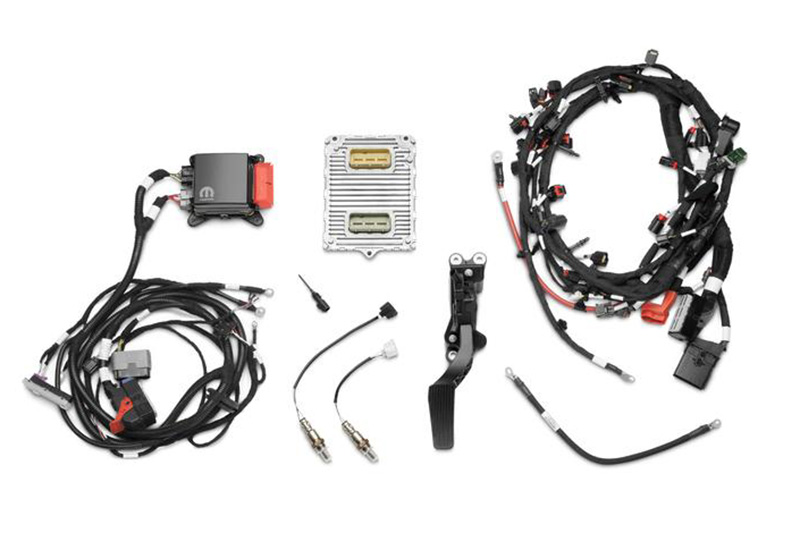America is the land of excess. It is a country built by outlaws — outlaws who revolted and flipped off the king. And though the United States has risen to soaring heights, revolutionized technology and information services, brought about real social and political change throughout the world, and reinvigorated the electric vehicle revolution, we are still, at our core, a bunch of rootin’, tootin’, six-gunnin’, tire-immolatin’, gasoline-swillin’ outlaws that will positively embrace Dodge’s all-new 1,000-horsepower Hellephant crate engine.
The Hellephant is essentially a hotted-up version of the 6.2-liter, supercharged V-8 found in the Hellcat and Demon. Bored out to a whopping 7.0-liters, the Hellephant V-8 also gets an aluminum block from the Charger Drag Pak, forged pistons, a high-lift camshaft, and the Demon’s valvetrain. However, to reach its peak performance — which is to the tune of 1,000 horsepower and 950 lb-ft of torque — the Hellephant also gets an increased displacement supercharger, a unit now calculated at 3.0-liters.
Now, you may be thinking that this crate engine will only be for the drag racing enthusiast, the kind of gearhead that eats, sleeps, and showers at their local dragstrip — the semi-professional, if you will. You’d be absolutely wrong. This 1,000-horsepower wild child will be sold to Joe and Jane Public to be slot in everything your dreams, or nightmares, can conjure. What’s even crazier is that the Hellephant was designed to be a fairly plug-and-play kit; Dodge is offering a Front End Accessory Drive package (including pulleys, belts, alternator, starter, and power steering pump) that will essentially bolt right into pre-1976 Chryslers.

Dodge debuted the Hellephant at the 2018 SEMA show under the hood of one heavily modified 1968 Dodge Charger, but the Hellephant engine won’t be available to consumers until 2019. Unfortunately, at its debut, Dodge declined to state how much the Hellephant will set those wishing to scorch pavement back in terms of dollars and cents. To guess, however, we’d have to think that Dodge would want a pretty penny more than the current generation Hellcat crate engine, which retails for $20,000. And though you could likely build a 1,000 horsepower LS V-8 for less, you’re not likely to find one with a warranty.
What would be our perfect build with the Hellephant you ask? Well, it would involve a mid-2000 Dodge Durango, Dakar-ready suspension, and all the open desert we could find.
Editors' Recommendations
- Dodge says goodbye to the gas age of muscle cars with the 1,025-HP SRT Demon 170
- Ride Out the Apocalypse With the 1,000-Horsepower Rezvani Tank X SUV
- What It’s Like to Drive the 755-Horsepower Corvette ZR1 on a Racetrack When You’re Not a Racecar Driver





